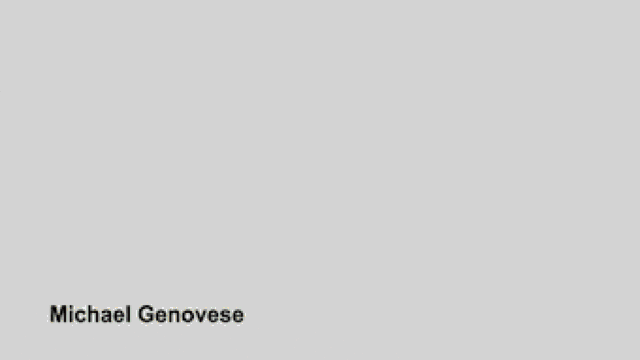Know Wave
In conversation with William J. Simmons
Volume 2
WJS: So, after much research, I have established that you are, in fact, an artist, and not the Pittsburgh mob boss. With this out of the way, let’s get started. These new paintings seem to stem from your interest in collaborative artistic practice within the public sphere, especially your work at the Frost Art Museum, yet there is an entirely different mode of information gathering taking place.
MG: Great, glad you were able to clear that up. After this Q&A, we should plan a little fishing trip. We’ll grab a bottle of Grappa, get a box of cannolis, and go shoot the shit about the old days. We’ll make a day out of it.
WJS: Only if we can also BBQ and play touch football and wrestle playfully and talk about how hot Jessica Simpson is and plan the week’s fantasy roster.
MG: OK, but let’s get to this first. Right, I faced a set of problems with that project. There are thousands of comments, drawings, and conversations from around the country, which were transcribed, that I’ve been left to deal with. I’m using that information as source material to see how the subject matter can develop, change, and morph by way of researching images online. The initial results were images that didn’t correspond correctly to the terms, but came up due to other embedded information within the file source. Algorithmic color-coding is an unseen component of the image as it loads, and that’s what led me in this direction.
WJS: I love the idea of the “unseen,” as this is exactly what you are doing – you’re mining color that is only visible for a few moments from the text you are searching. In this way, you are getting at some kind of interior space, that may not be initially legible, on what looks like highly polished, hard-edged abstract paintings. After all, the origin of abstraction was exactly the search for something that is perpetually unseen – a universal language, some sort of expression without speech that transcends culture, and enters the realm of the spiritual. The other component of the “unseen,” however, is an element of control. Even the most minute experiences we have on our phones are regulated. Is there something nefarious latent in your project? I’m reminded of that very famous Barbara Kruger image/book Remote Control (1994). There is also a connection to Sarah Charlesworth’s Modern History series, in which information and socio-political relationships become reduced to formal relationships.
MG: I’m looking for that quiet and undefined space between information, and what you refer to as the interior space – that flawed moment in translation, color, and order, right before it fails. Charlesworth’s Modern History series is a perfect example. In that work, the entire written context was removed, leaving you with just a stark black and white image, with a floating set of editorial photos, and a header. By way of redaction, you were faced with drawing your own conclusions from the void. These are similar in that way, though the cues of information are further removed to set up issues with context, color, and perception. Deception isn’t designed into the image, but if a painting is contextualized with a provocative title, for example Stereotypes or Faith, the viewer is bringing their history of the subject to the image, and it can be construed as subliminal.
WJS: Since you bring up the inherently flawed nature of these images, and their intensely personal nature, I think this is a great place to consider the sense of longing I see in these paintings. Just when you think lines are going to connect, or at least create something formally sensible, things fall apart. To quote Yeats, via Achebe: the center, indeed, cannot hold. This off- kilter sense of order bespeaks an urge for unity, for completion (I use this word advisedly, with all its connotations), for some sort of resolution.
MG: The paintings are based on the time in between the search and the resolution. The idea of waiting is what I’m working with, where something concrete has previously happened while in a state of pause before another tangible situation occurs. Similar to the format of our conversation, the time intervals between responses – the thoughts that appear and disappear as time lapses. It can be as aggravating as it is welcome. It's imbalanced and unresolved, with a will to connect to a collective unconscious.
.


